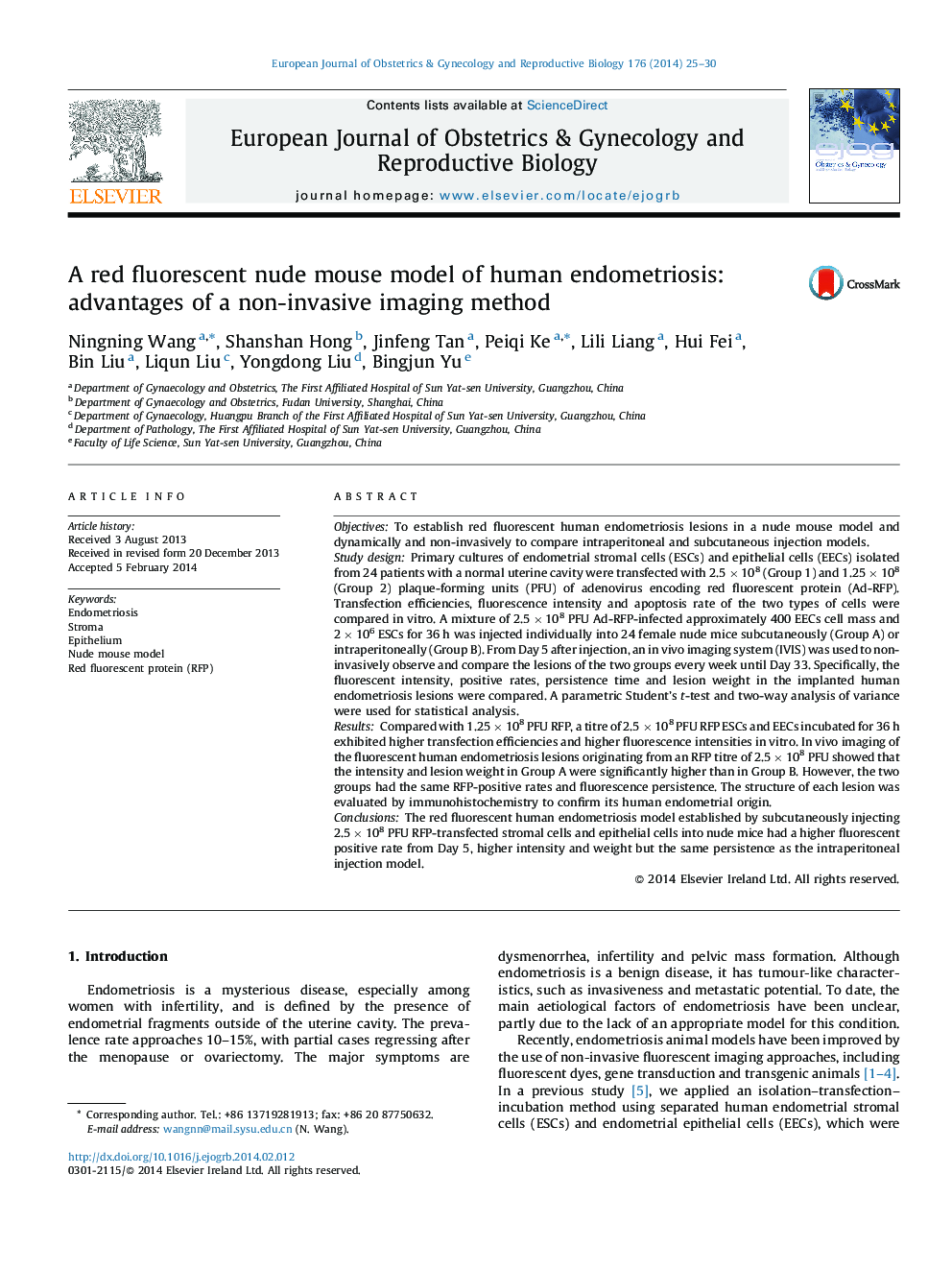| کد مقاله | کد نشریه | سال انتشار | مقاله انگلیسی | نسخه تمام متن |
|---|---|---|---|---|
| 3920059 | 1599805 | 2014 | 6 صفحه PDF | دانلود رایگان |
ObjectivesTo establish red fluorescent human endometriosis lesions in a nude mouse model and dynamically and non-invasively to compare intraperitoneal and subcutaneous injection models.Study designPrimary cultures of endometrial stromal cells (ESCs) and epithelial cells (EECs) isolated from 24 patients with a normal uterine cavity were transfected with 2.5 × 108 (Group 1) and 1.25 × 108 (Group 2) plaque-forming units (PFU) of adenovirus encoding red fluorescent protein (Ad-RFP). Transfection efficiencies, fluorescence intensity and apoptosis rate of the two types of cells were compared in vitro. A mixture of 2.5 × 108 PFU Ad-RFP-infected approximately 400 EECs cell mass and 2 × 106 ESCs for 36 h was injected individually into 24 female nude mice subcutaneously (Group A) or intraperitoneally (Group B). From Day 5 after injection, an in vivo imaging system (IVIS) was used to non-invasively observe and compare the lesions of the two groups every week until Day 33. Specifically, the fluorescent intensity, positive rates, persistence time and lesion weight in the implanted human endometriosis lesions were compared. A parametric Student's t-test and two-way analysis of variance were used for statistical analysis.ResultsCompared with 1.25 × 108 PFU RFP, a titre of 2.5 × 108 PFU RFP ESCs and EECs incubated for 36 h exhibited higher transfection efficiencies and higher fluorescence intensities in vitro. In vivo imaging of the fluorescent human endometriosis lesions originating from an RFP titre of 2.5 × 108 PFU showed that the intensity and lesion weight in Group A were significantly higher than in Group B. However, the two groups had the same RFP-positive rates and fluorescence persistence. The structure of each lesion was evaluated by immunohistochemistry to confirm its human endometrial origin.ConclusionsThe red fluorescent human endometriosis model established by subcutaneously injecting 2.5 × 108 PFU RFP-transfected stromal cells and epithelial cells into nude mice had a higher fluorescent positive rate from Day 5, higher intensity and weight but the same persistence as the intraperitoneal injection model.
Journal: European Journal of Obstetrics & Gynecology and Reproductive Biology - Volume 176, May 2014, Pages 25–30
